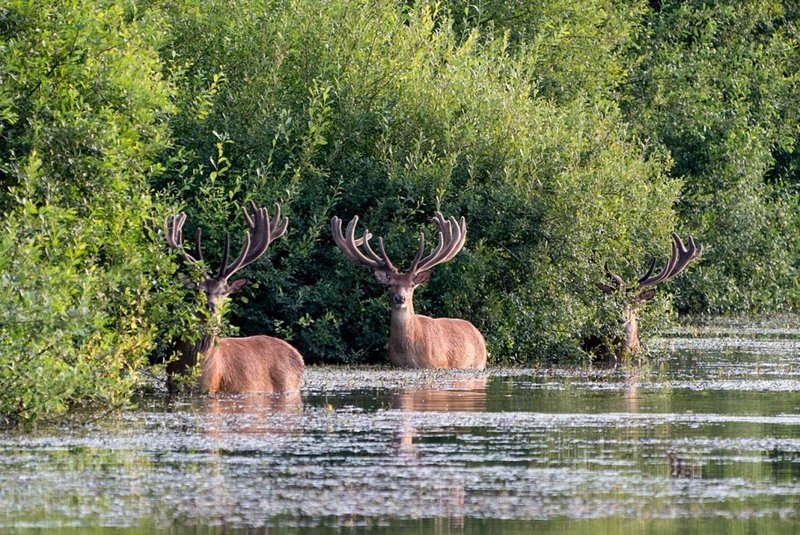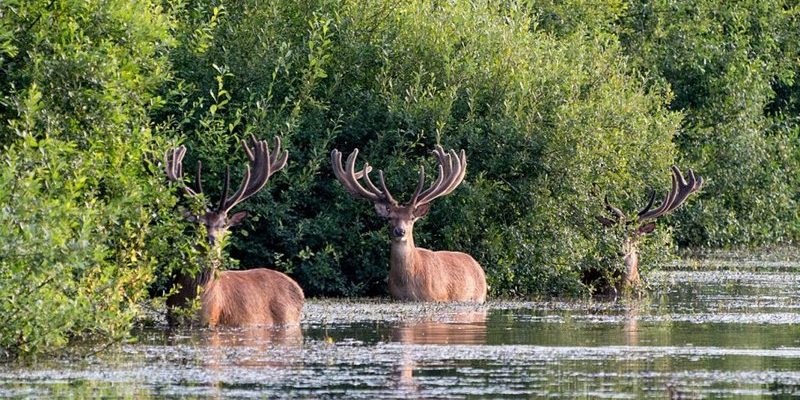
But where exactly do red deer call home? Why does their habitat matter? Imagine having to find a comfy spot with just the right mix of food, safety, and space to roam. For red deer, it’s all about finding that perfect balance. Let’s dive in and explore their habitats, the environments they thrive in, and how their distribution has changed over time.
Understanding Red Deer Habitats
Red deers are quite versatile when it comes to their habitats. Typically, they prefer wooded areas, particularly deciduous and mixed forests. These environments not only provide ample food sources, such as leaves and shrubs, but they also offer essential cover from predators. Think of it like having a cozy home with a backyard garden. The trees offer food while keeping them safe from the hustle and bustle of the outside world.
In the summer months, red deer often move to higher altitudes or open grasslands. These areas provide fresh grazing opportunities, which help them maintain their energy levels as they roam. If you were to go hiking in the mountains during this season, you might just spot a group of these deers munching on tasty grass while enjoying the cool breeze.
This adaptability is crucial for their survival. Red deer can modify their behavior and movement patterns based on the season and local food availability. It’s a bit like how we tweak our routines in response to changing weather—bundling up in winter and enjoying sunny outdoor activities in summer.
Red Deer Distribution Across Europe
Red deer have a broad distribution across Europe. They can be found in countries like Scotland, Spain, and parts of Scandinavia. If you look at a map, you’ll notice that their populations cluster in certain areas, often where forests are abundant. For example, the Scottish Highlands provide a fantastic environment for red deer, with rocky hillsides and deep forests creating a natural playground.
Interestingly, they have also been introduced to areas outside their natural range. For instance, red deer were brought to New Zealand in the 19th century, where they now thrive in the wild. This introduction is a fascinating example of how adaptable these animals can be, as they’ve successfully established themselves in a completely different ecosystem.
However, habitat loss and human encroachment pose significant challenges to their distribution. Urban expansion, agriculture, and deforestation threaten the traditional habitats of red deer, forcing them to adapt or migrate to new areas.
Climate Influence on Red Deer Habitats
Climate plays a significant role in shaping the habitats of red deer. These animals thrive in temperate climates, where they can experience distinct seasonal changes. For instance, during colder months, red deer will often gather in lower altitudes to find shelter and food. This seasonal migration is similar to how we might enjoy the warmth of a cozy living room when it’s chilly outside.
You might be wondering how climate change affects them. As temperatures rise, red deer may be forced to shift their ranges to find suitable habitats. This change can lead to increased competition with other wildlife and even impact their breeding patterns. The future of these deer will depend on both their ability to adapt and how well we manage their habitats.
Distinctive Features of Their Habitat
Red deer prefer habitats that combine specific features. They need access to food sources, water, shelter, and ample space for roaming. Let’s break down these essential elements:
- Food Sources: Red deer primarily graze on grasses, leaves, and buds. They thrive in areas rich with vegetation where they can find these food sources year-round.
- Water: Access to freshwater is crucial. Red deer typically choose habitats near rivers, lakes, or wetlands to stay hydrated.
- Shelter: Dense forests or thickets provide safety from predators. These areas give red deer a place to hide from dangers, especially during calving season.
- Space: Although they enjoy being in herds, red deer need enough territory to avoid overgrazing and to allow for social interactions.
By meeting these needs, red deer can thrive and maintain healthy populations. It’s a bit like how we look for a home that fits all our requirements—comfort, safety, and proximity to resources.
The Impact of Human Activity on Red Deer Habitats
Human activity has a profound impact on red deer habitats. Urban development and agriculture have led to significant habitat fragmentation, which means red deer can no longer roam as freely as they once did. Imagine trying to walk in a straight line but having to zigzag around walls and obstacles—that’s what red deer face in their environments.
Moreover, hunting can also affect their populations, particularly if it’s not regulated. In some areas, overhunting has led to declining numbers of red deer, making conservation efforts vital. However, hunting can be sustainable when managed responsibly, as it helps maintain healthy populations by preventing overgrazing and habitat degradation.
Conservation groups and national parks play a crucial role in preserving these habitats. By establishing protected areas, they help ensure that red deer can continue to thrive and that their habitats remain intact.
Conservation Efforts and Future Prospects
There are ongoing efforts to conserve red deer habitats and populations across Europe. Many countries have implemented strict hunting regulations to stabilize populations while also promoting responsible wildlife management. This is essential for maintaining biodiversity and the health of ecosystems.
In addition, many organizations focus on habitat restoration. This involves planting native trees, restoring wetlands, and creating wildlife corridors to connect fragmented habitats. These actions help red deer find the resources they need while allowing them to move freely across their landscapes.
The future of red deer will rely on continued conservation efforts as well as public awareness about the importance of preserving their habitats. As individuals, we can contribute by supporting conservation initiatives and spreading the word about the importance of these magnificent animals and their homes.
To wrap it up, red deer are fascinating creatures that thrive in a variety of habitats across Europe and beyond. Their ability to adapt to different environments, combined with our understanding of their needs, helps us appreciate their role in nature. The next time you think about red deer, remember that their homes are not just places where they eat and sleep; they’re complex ecosystems that require our protection.
As we face challenges like climate change and habitat loss, it’s vital to stay informed and support conservation efforts. The more we learn about red deers and their habitats, the better equipped we will be to protect these graceful giants for generations to come. So, whether you’re a nature lover or just curious about these incredible animals, know that every little effort counts in ensuring their survival.

